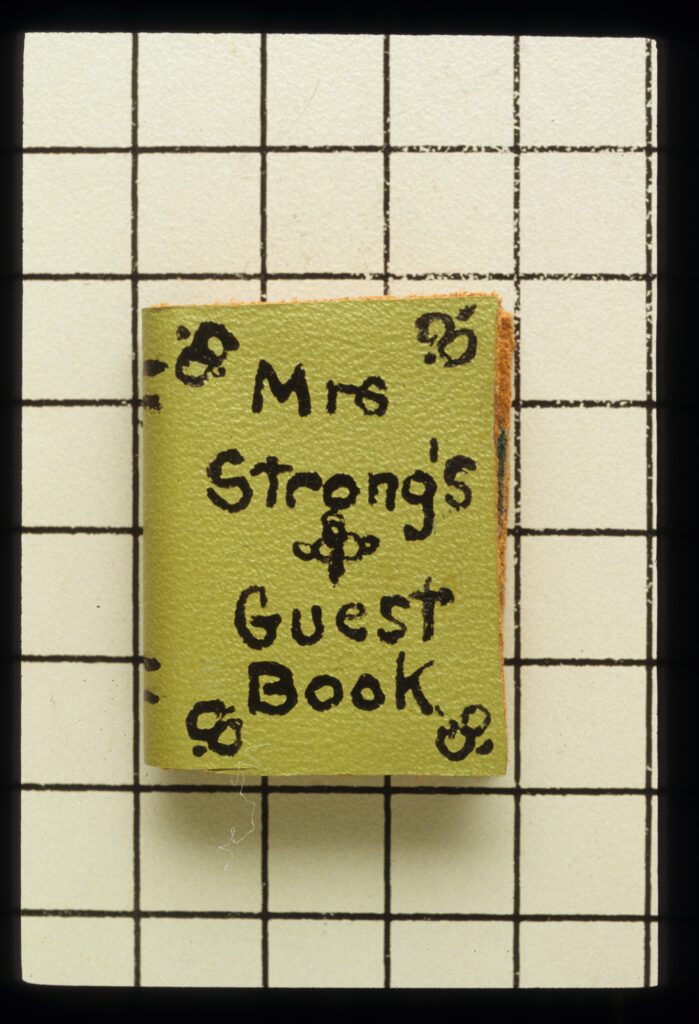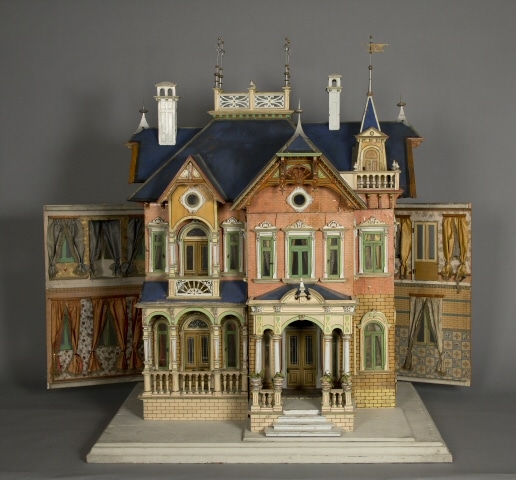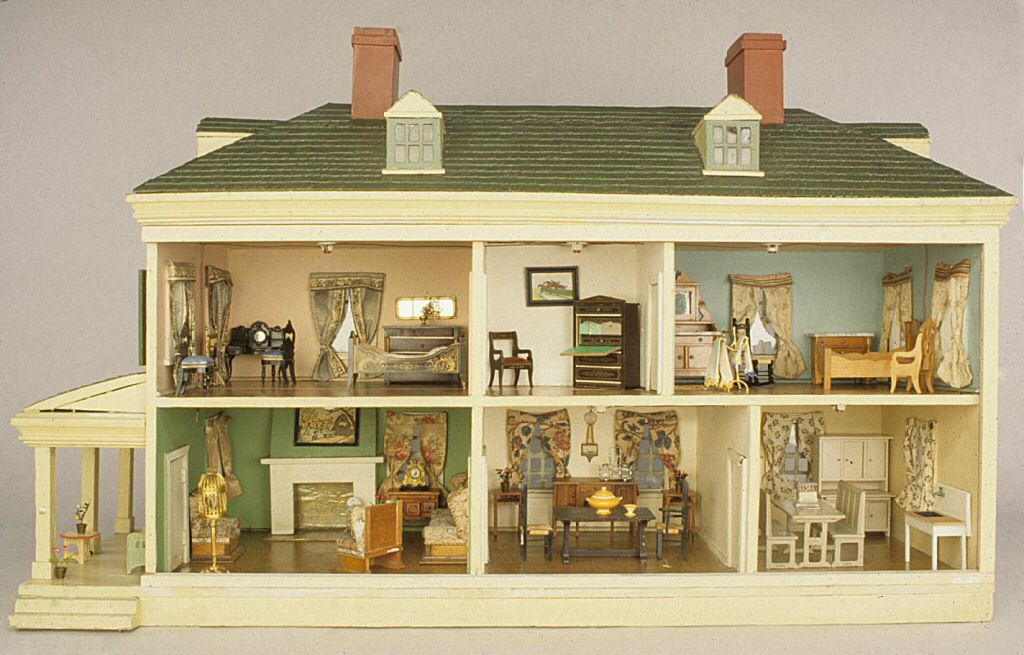Once adult playthings, dollhouses originally showcased finely crafted furnishings made of exotic materials and served as symbols of wealth. But miniatures fascinated children as much as adults, and toymakers began producing variations of these houses for kids to enjoy. And dollhouses remain a favorite plaything today, as well as an inductee to the National Toy Hall of Fame.

Margaret Woodbury Strong, the museum’s founder, was an avid collector of dollhouses. A ticket from 1958 invited guests to the “First Public Showing of Mrs. Homer Strong’s World-Famous Collection of Doll Houses” at her residence in Pittsford, New York. The nearly 100 dollhouses exhibited represented only a portion of her collection. In celebration of Margaret Woodbury Strong’s fascination with spectacular miniatures, The Strong National Museum of Play has opened Dollhouses Unveiled. The exhibit provides a unique opportunity to view dozens of rare dollhouses and miniatures from The Strong’s collections (many not seen on public view in decades along with others new to the museum).
The dollhouses on display provide a sample of design and play patterns from the 1830s to present day. A few highlights include the Mystery House and Blue Roof Victorian Mansion, as they have been called. Around 1890, the famed FAO Schwarz toy store carried a line of dollhouses with delicately carved wood accents. Dollhouse expert Flora Gill Jacobs later named the series “Mystery Doll Houses,” because she couldn’t identify the maker, though some speculated that prisoners made them. The elaborate houses signaled luxury and were correspondingly expensive. One version sold for $80—nearly a half-month’s salary for a lawyer at the time. During the same decade, the Mortiz Gottschalk Company created an elaborate mansion with a blue roof. FAO Schwartz also featured this house as a Christmas exclusive. Its construction of lithographed paper on wood created a spectacular design with a wondrous concoction of gables, turrets, spindles, and balustrades.

Nearly 100 years later, Barbie moved into her Magical Mansion. Felix Burrichter, co-editor of Barbie Dreamhouse: An Architectural Survey, said the pale walls and fluffy sofa reminded him of the suburban house in the 1987 thriller Fatal Attraction. Snobs might have scoffed, but kids loved ringing the functioning doorbell and phone. While thinking about life in plastic, one of the most striking objects on display is the Kaleidoscope House manufactured by Bozart Toys in 2001. Designed by artist Laurie Simmons and architect Peter Wheelwright, the Kaleidoscope House has sliding transparent walls, an arced-slab partial roof, and modern art pieces. The creators sought to update the conventional dollhouse with subtle touches, like sliding walls that allow for play with color, design, and light. The Kaleidoscope House provides just one example of how the history of dollhouses reveals shifting ideas about domestic life, innovative design, and imaginative play.

Aside from the dollhouses that include Margaret Strong’s childhood dollhouse and elaborate recent residences marketed to grownups, guests to the exhibit can complete a scavenger hunt for teeny tiny miniatures that replicate everyday life, play with the lights and sounds we’ve added to the 1837 Amsterdam House, and view vintage dollhouse advertisements and photographs. Dollhouses Unveiled will be on display through January 4, 2026.


